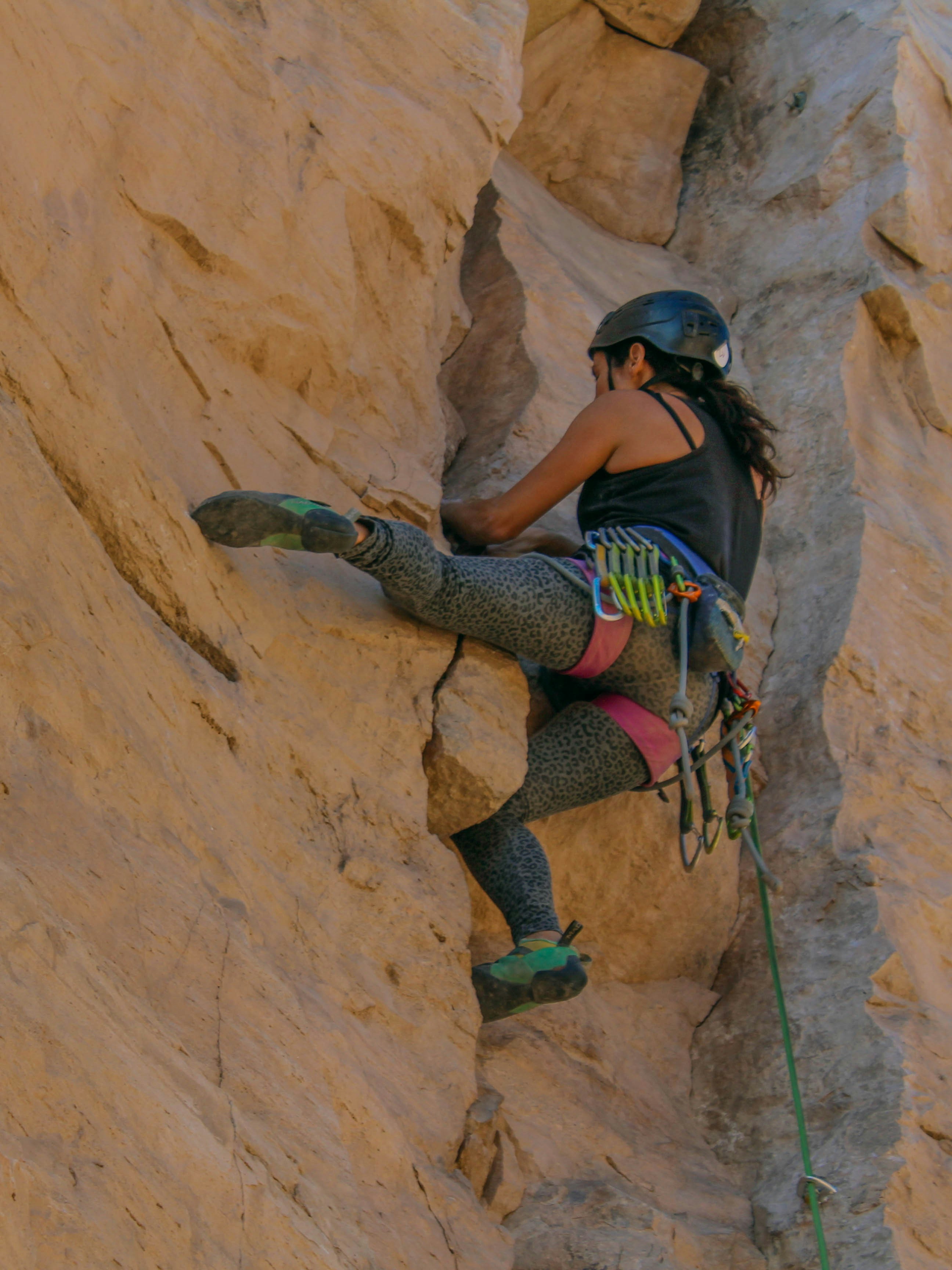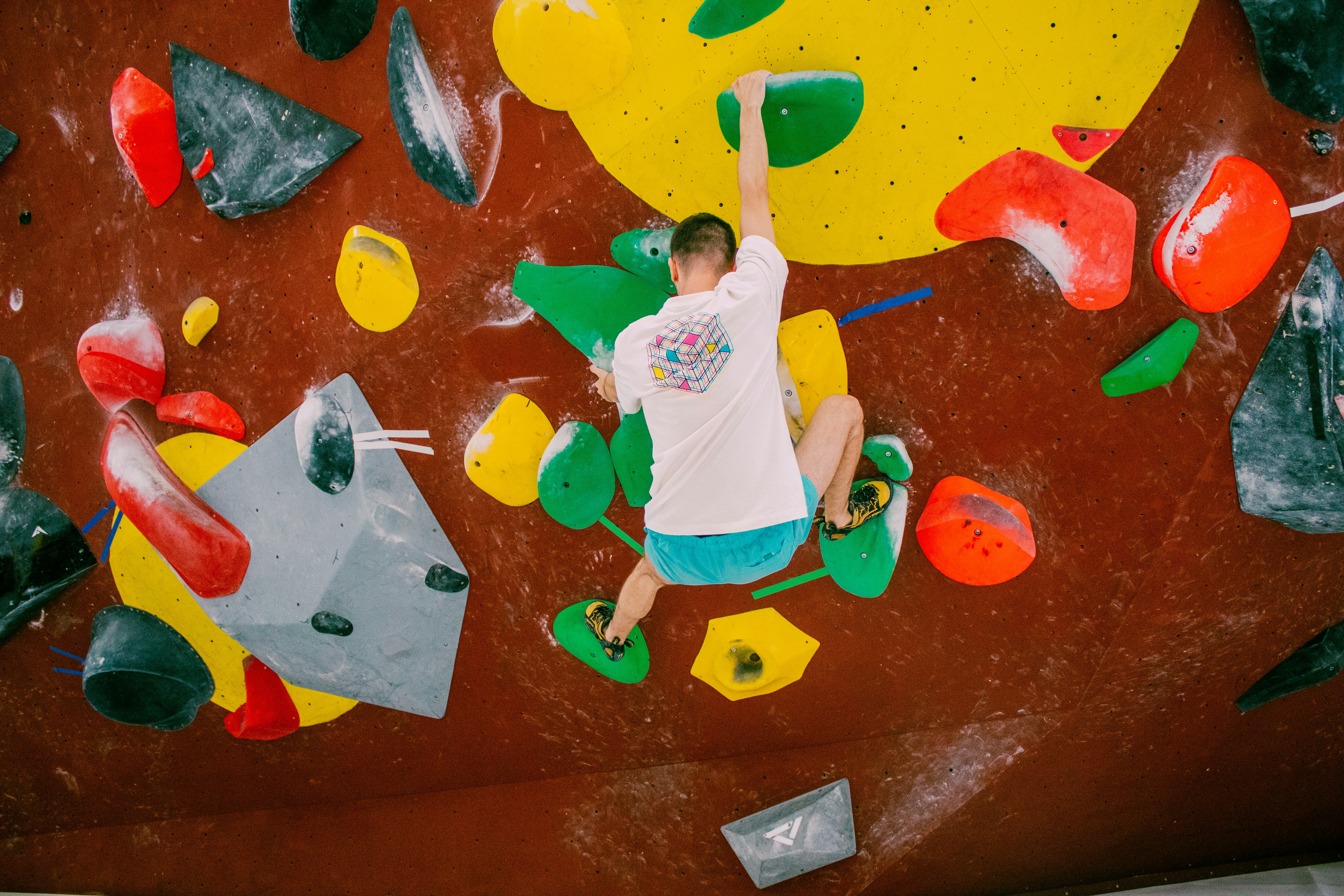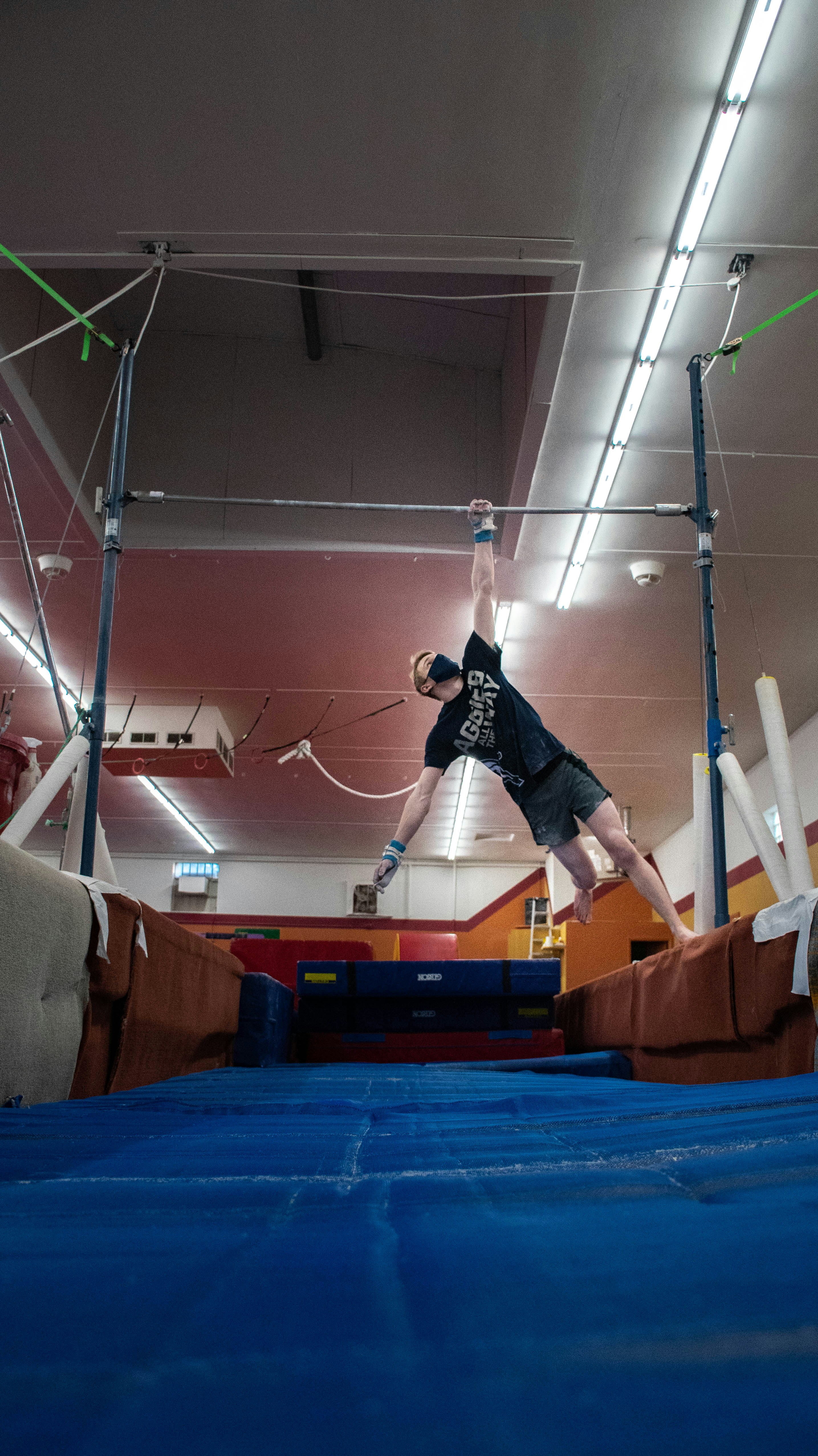Something fundamental has shifted in competition climbing over the past two years, and if you've been following the 2025 IFSC World Cup season, you've probably felt it. The problems are different now - not just harder, but requiring entirely new movement vocabularies that challenge everything we thought we knew about efficient climbing.
This isn't just about setters getting more creative. We're witnessing the emergence of genuine meta-techniques that are reshaping how athletes train, how they read problems, and ultimately how they move on the wall. With the World Championships kicking off in Seoul this week, it's the perfect time to examine how these innovations are changing the game.
The New Movement Language
Walk into any gym hosting a local competition today, and you'll immediately notice something different from competitions five years ago. The problems don't just look harder - they demand movement patterns that barely existed in competitive climbing a decade ago. Routesetters have developed what many are calling "comp moves" specifically designed to challenge the evolved skill sets of modern athletes.
The most obvious example is the prevalence of laches and all-points-off dynamic movements that have become standard in both bouldering and lead competitions. During this year's World Championships qualifiers, nearly every route featured at least one moment where athletes had to completely disconnect from the wall. This isn't accidental - it's a direct response to the incredible technical proficiency that top competitors now possess.
But the real revolution is happening in the subtle details. The "slab spin" technique that dominated 2023 has evolved into increasingly complex positional challenges that force climbers to completely reorient their relationship with the wall. These movements prioritize lower body strength and spatial awareness over traditional upper body power, creating a more diverse competitive landscape.
What makes this particularly interesting is how these comp-specific movements are trickling down into gym setting for recreational climbers. Setters are incorporating these techniques into regular commercial routes, raising the overall technical standard across the entire climbing community. The line between competition climbing and gym climbing is blurring in ways that ultimately benefit everyone.
Technology Meets Tradition
Perhaps the most dramatic shift happening in 2025 is the integration of technology into route setting itself. Augmented reality systems are now being used to project dynamic routes onto walls, allowing setters to test infinite variations without physical holds. While still experimental, early implementations suggest this could revolutionize both training and competition formats.
The immediate impact is more practical but equally significant. Smart tracking systems are providing unprecedented data about how climbers interact with specific hold types and movement sequences. This feedback is informing route design in real-time, creating problems that are scientifically optimized to challenge specific physical and technical attributes.
Machine learning algorithms are beginning to analyze movement patterns from competition footage, identifying micro-techniques that separate elite performers from the field. This data is then feeding back into route design, creating problems that specifically target these performance differentiators. The result is competitions that are becoming increasingly precise in their ability to distinguish skill levels.
However, the human element remains crucial. The best setters are using these technological tools to enhance their intuition rather than replace it. They're identifying patterns and possibilities that might have taken years to discover through traditional trial and error, then applying their artistic vision to create problems that tell compelling movement stories.
The Hold Revolution
The evolution of climbing holds in 2025 represents perhaps the most tangible example of how competition climbing is pushing the boundaries of the sport. The introduction of Ghost holds and textureless holds from companies like Flathold has fundamentally altered how athletes approach grip and body positioning.
These innovations aren't just about making problems harder - they're about creating new categories of difficulty. Ghost holds, with their dual-texture surfaces that are difficult to distinguish visually, force climbers to rely more heavily on proprioception and adaptive grip techniques. This shifts the emphasis from pure finger strength to grip intelligence and adaptability.
The textureless holds that made their debut at the Bern World Championships have taken this concept even further. These glassy, friction-free surfaces create coordination boulders that require entirely new approaches to body positioning and momentum management. Athletes who excel on these holds often have backgrounds in other movement disciplines like gymnastics or parkour.
What's particularly fascinating is how these hold innovations are driving training adaptations throughout the competitive community. Athletes are incorporating grip-specific training protocols, working with variable texture training tools, and developing heightened sensory awareness drills. The physical preparation for competition climbing is becoming increasingly sophisticated and specialized.
The ripple effects extend beyond elite competition. Commercial gym setters are experimenting with similar concepts, creating problems that challenge climbers to develop more nuanced grip techniques. This is raising the baseline technical standard across the entire climbing population and creating more well-rounded athletes at every level.
The Mental Game Evolution
Competition route reading has undergone its own revolution in 2025. The increased complexity and novelty of modern problems means that traditional route reading strategies are often insufficient. Athletes must now develop pattern recognition skills for movement sequences that didn't exist in their training vocabulary until recently.
The psychological demands have intensified correspondingly. When facing a problem with completely unfamiliar hold textures or movement requirements, athletes must manage uncertainty in ways that traditional mental training didn't necessarily prepare them for. The most successful competitors are developing real-time adaptation strategies that allow them to modify their approach mid-climb.
This has led to new training methodologies focused on cognitive flexibility and problem-solving under pressure. Athletes are practicing with deliberately unfamiliar hold types and movement patterns, building comfort with discomfort and developing confidence in their ability to adapt quickly to novel challenges.
The broader climbing community is benefiting from these developments as well. Local competitions are incorporating elements of route reading challenges and novel movement problems, helping recreational climbers develop the same adaptive skills that elite athletes are using at the highest levels.
Training for the New Meta
The training implications of these developments are profound. Traditional periodization models built around strength and technique development must now account for the need to regularly introduce novel movement patterns and grip challenges. Athletes are incorporating what might be called "meta-training" - deliberately practicing with movement styles and hold types they've never encountered before.
Cross-training has become increasingly important, with many elite climbers working with coaches from gymnastics, parkour, and even dance to develop movement vocabularies that translate to the wall. The most successful athletes are those who can quickly assimilate new movement patterns and apply them under competitive pressure.
Recovery protocols have also evolved to address the different types of stress these new movement patterns place on the body. Dynamic movements and positional challenges create fatigue patterns that differ from traditional climbing loads, requiring more sophisticated approaches to training load management and injury prevention.
The democratization of these training concepts through gym programs and online coaching is helping develop a generation of climbers who are comfortable with uncertainty and adaptable in their movement approach. This is raising the overall standard of climbing across all levels of the sport.
Looking Ahead: The Future of Competition Climbing
As the 2025 World Championships unfold this week, we're seeing the culmination of these trends in real-time. The problems being set for the world's best athletes represent the cutting edge of route setting innovation, showcasing movement patterns and technical challenges that will likely filter down through the competitive pyramid over the coming years.
The broader implications extend far beyond elite competition. The climbing gym industry is experiencing unprecedented growth, with over 870 facilities in North America alone. As these innovations become more widespread, they're creating opportunities for climbers at every level to engage with more sophisticated and challenging problems.
The integration of technology, novel holds, and evolved movement patterns is creating a sport that rewards adaptability, creativity, and technical sophistication in ways that complement traditional strength and endurance training. This is making competitive climbing more accessible to athletes from diverse physical backgrounds while simultaneously raising the ceiling for what's possible on the wall.
The next phase of this evolution will likely involve even more sophisticated integration of technology and training methodology. Virtual reality training environments, AI-powered movement analysis, and biomechanically optimized hold design are all on the horizon. The sport is becoming more scientific without losing its essential creative and artistic elements.
For climbers at every level, the message is clear: embrace adaptation, stay curious about new movement patterns, and be prepared to challenge your assumptions about what efficient climbing looks like. The meta is evolving, and the athletes who evolve with it will find themselves at a significant advantage in this rapidly changing landscape.
Practical Applications for Every Climber
Understanding these meta-techniques isn't just academic exercise - these concepts can dramatically improve your climbing regardless of your competitive aspirations. The key is recognizing how the principles behind competition innovations apply to your own training and problem-solving approach.
Start incorporating grip variability into your regular climbing sessions. Even if your gym doesn't have Ghost holds or textureless surfaces, you can simulate similar challenges by varying your grip style on familiar holds. Practice using different parts of your hand on the same hold, or intentionally use suboptimal grip positions to develop adaptability.
The dynamic movement patterns that are becoming standard in competitions can be practiced safely in controlled environments. Work on small laches and coordination moves at comfortable grades before attempting them on limit problems. Focus on building confidence with all-points-off positions and developing the core strength and spatial awareness these movements demand.
Route reading skills developed for competition-style problems translate directly to outdoor climbing and complex gym problems. Practice reading problems without watching others attempt them first. Spend time analyzing movement sequences before touching the holds. Develop comfort with changing your approach mid-climb when your initial read proves insufficient.
The cognitive flexibility that modern competition climbing demands can be developed through deliberate practice with unfamiliar movement styles. Seek out problems that feel awkward or unnatural. Work with different climbers whose movement styles contrast with your own. Challenge yourself to find multiple solutions to the same problem.
The Coaching Revolution
The evolution in competition climbing has driven corresponding innovations in coaching methodology. Modern climbing coaches are incorporating concepts from motor learning research, sports psychology, and movement analysis in ways that were uncommon just a few years ago.
The most effective coaches are now working with athletes to develop what might be called "movement literacy" - the ability to quickly decode and adapt to novel movement challenges. This involves systematic exposure to unfamiliar movement patterns, deliberate practice with uncertainty management, and development of real-time problem-solving skills.
Video analysis has become increasingly sophisticated, with coaches using frame-by-frame breakdown to identify micro-techniques that create competitive advantages. Athletes are learning to see their own movement patterns with unprecedented precision and to make incremental adjustments that compound into significant performance improvements.
The democratization of these coaching concepts through online platforms and gym programs is making high-level instruction more accessible. Weekend competitors can now access training methodologies that were previously reserved for elite athletes, raising the overall standard of performance across the competitive pyramid.
Injury prevention protocols have also evolved to address the specific demands of modern competition climbing. The dynamic movements and novel positions required by contemporary problems create different stress patterns than traditional climbing, requiring more nuanced approaches to load management and recovery.
Competition Psychology in the New Era
The psychological demands of modern competition climbing require athletes to develop mental skills that extend far beyond traditional sports psychology approaches. The uncertainty inherent in facing completely novel movement patterns means that athletes must become comfortable with not knowing the solution to a problem before attempting it.
Successful competitors are developing what researchers might call "productive confusion" - the ability to remain calm and analytical when confronted with unfamiliar challenges. This involves both accepting uncertainty and maintaining confidence in one's ability to adapt and problem-solve in real-time.
The spectacle aspect of modern competitions has also intensified the psychological pressure. With dynamic movements and dramatic position changes becoming standard, athletes must perform increasingly spectacular feats while managing the pressure of audience expectations and media attention.
Mental training protocols are evolving to address these specific challenges. Athletes are practicing visualization techniques for movements they've never attempted, developing comfort with improvisation under pressure, and building resilience for the inevitable failures that come with pushing the boundaries of what's possible.
The community aspect of competitive climbing provides both support and additional pressure. The encouragement and enthusiasm of other competitors can be incredibly motivating, but it also creates expectations and social dynamics that athletes must navigate while maintaining focus on their own performance.
Regional Variations and Cultural Evolution
One of the most interesting aspects of the 2025 competition climbing landscape is how different regions are developing distinct approaches to these meta-techniques. European competitions tend to emphasize technical precision and movement efficiency, while North American events often feature more dynamic and powerful movement patterns.
Asian competitions, particularly those in Japan and South Korea, are pioneering integration of technology and traditional route setting in ways that are influencing global standards. The combination of ancient movement philosophy with cutting-edge hold technology is creating uniquely sophisticated competition experiences.
These regional variations are creating a richer global competitive landscape where athletes must adapt not just to different problems, but to different philosophical approaches to movement and problem-solving. This is driving innovation and preventing the sport from becoming too standardized or predictable.
The exchange of ideas between regions is happening at an unprecedented pace, with social media and online coaching platforms facilitating rapid dissemination of new techniques and training methodologies. What emerges in one competition often appears in gyms around the world within weeks.
Local climbing communities are adapting these global trends to their specific cultures and facilities, creating unique variations that contribute back to the broader evolution of the sport. This grassroots innovation is ensuring that competition climbing remains diverse and creative rather than becoming overly homogenized.
The Economics of Innovation
The rapid evolution in competition climbing is driving significant economic changes throughout the industry. Hold manufacturers are investing heavily in research and development to create the next generation of texture and shape innovations. Gym owners are upgrading facilities to accommodate the technological integration and sophisticated route setting that modern competition climbing demands.
Training facilities are becoming increasingly specialized, with some focusing specifically on the technical and dynamic movement patterns that define contemporary competition climbing. This specialization is creating new opportunities for coaches, setters, and facility operators while raising the bar for what climbers expect from their training environments.
The growth in competition participation is driving demand for specialized equipment, coaching services, and training programs. This economic expansion is making the sport more sustainable while creating career opportunities for athletes, coaches, and industry professionals at all levels.
Sponsorship and media attention are following the increased spectacle and athleticism of modern competition climbing. The dramatic movements and technological sophistication are creating more engaging content for audiences, which translates to better support for athletes and events.
The revolution in competition climbing isn't just changing how problems are set or how athletes train - it's reshaping the fundamental nature of what it means to be a complete climber in 2025 and beyond. As these innovations continue to evolve and spread throughout the climbing community, they're creating opportunities for athletes at every level to engage with the sport in more sophisticated, challenging, and ultimately rewarding ways.



